We went to Narnia the other day – not in the conventional way through the back of a wardrobe, but in a Fiat Panda. Ancient Narnia, or modern Narni, is a place that illustrates the way the geography of Italy has shaped military and political strategy, and in turn the geopolitics of Italy at various critical times. It is also a pretty medieval town.
In peninsular Italy – that part south of the Po Valley – the mountains all run roughly north-south. This means it is hard to move overland in an east-west direction, and easier to move north-south, but your opportunities to do so are constrained to certain valleys and passes. Which in turn means that certain places are natural choke-points. One such – in 1944 as well as in the Middle Ages – is Cassino, between Naples and Rome. Narni is another.
Narni sits on high ground on the edge of a deep ravine through which the River Nera – a tributary of the Tiber – flows south out of Umbria into Lazio. It is literally on the edge of the ravine; houses and palaces on the western side of the old town, including the Eroli Museum, look straight down into it. To the north and east of the town is the valley of the lower Nera, which, although surrounded by mountains, contains a good deal of industrial development. On the plain around Narni is the modern industrial town of Narni Scalo, which makes getting a decent photograph of or from the old town something of an exercise in artful composition.
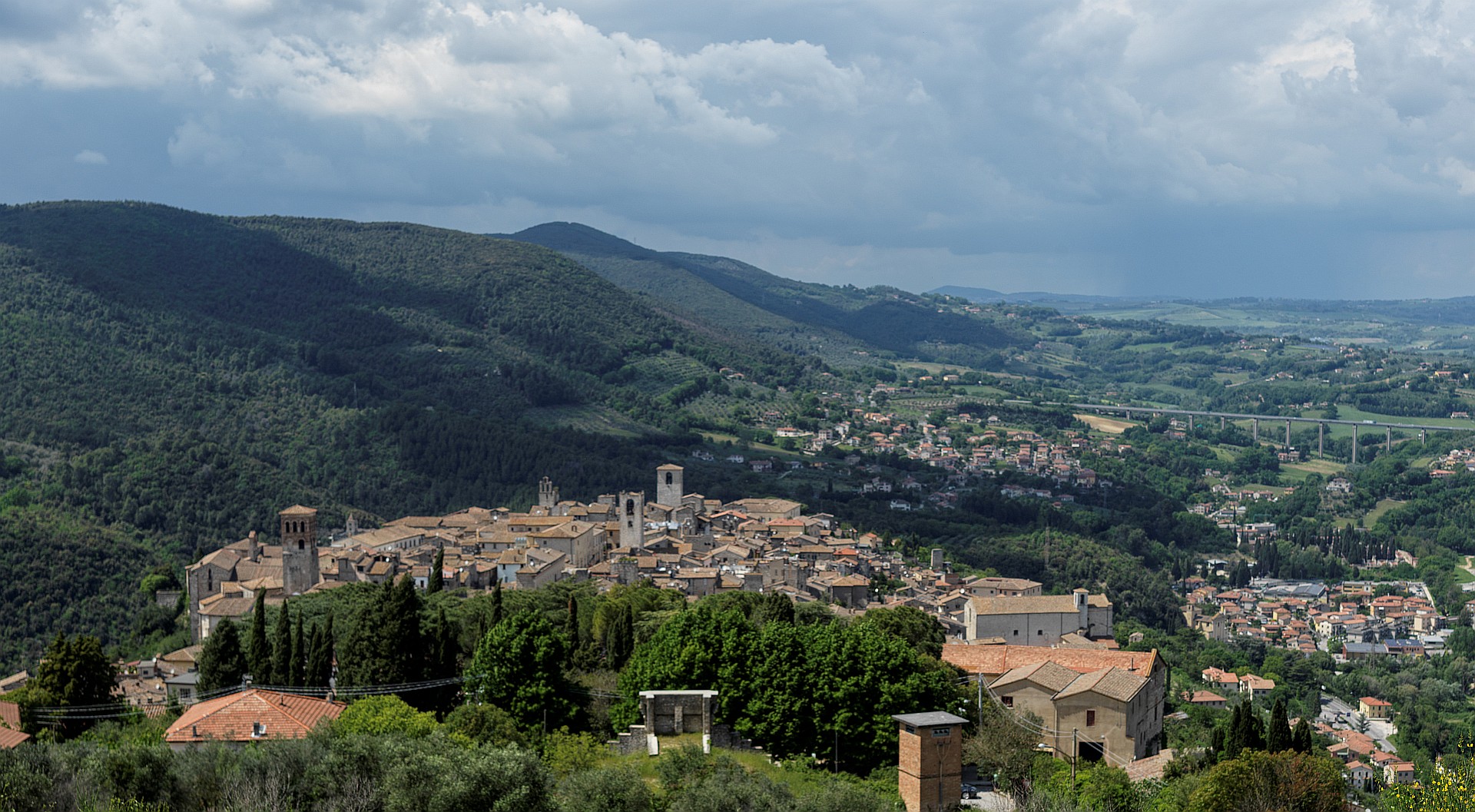
To the northeast, at the other end of the valley, is the town of Terni, the provincial capital (Umbria is divided into two provinces: Perugia and Terni). Thanks to nearby sources of hydro-electricity, Terni was a centre of industrialisation and was known as “The Manchester of Italy”. Unfortunately, one of the industries was arms manufacturing, as a result of which Terni was heavily bombed during the Second World War, destroying much of its medieval centre.
Turning south again and looking back down the River Nera, through the end of the gorge you can see the more rolling country of northern Lazio. There is a road running along the side of the gorge; now carrying heavy road traffic, this is the Strada Statale 3 (SS3), which as I noted here is still known as the Via Flaminia, as when it was first built by the Romans in 220 BC. If you were a legionary marching from Rome to the northern Adriatic coast (and beyond to the eastern frontiers of the empire), this is the way you would come. And if you were a traveller in the other direction – in an army of barbarians after the fall of the empire, or a medieval pilgrim, this is one of the few roads by which you would approach Rome. If you were coming from France or Britain you would come by sea or over the western Alps on the Via Francigena.
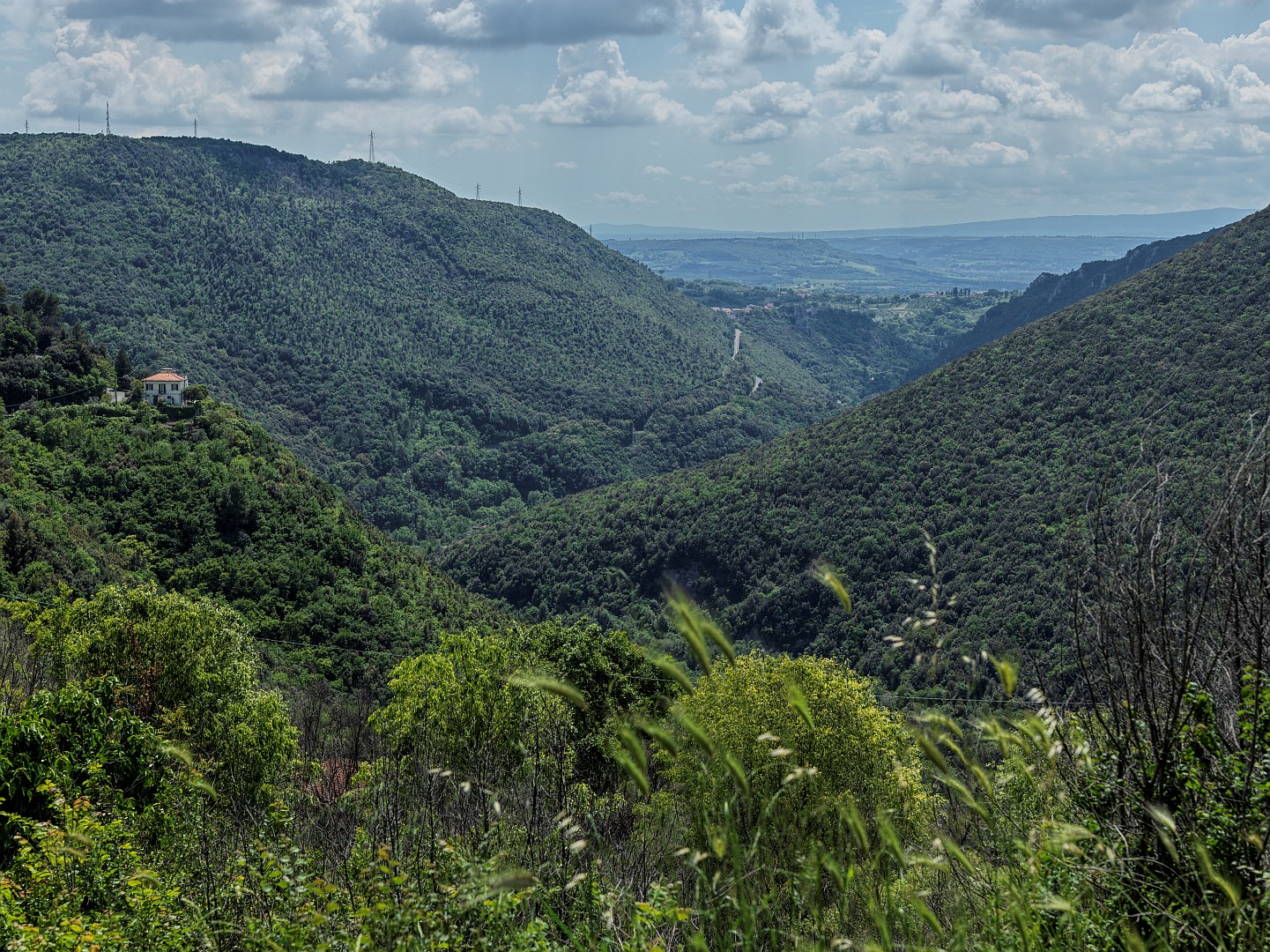
Dominating Narni from an even higher point is a fortress or Rocca, of a type known as a Rocca Albornoz, of which there are several examples in central Italy, and of which there were once several more. This requires a bit of explanation.
Between 1309 and 1376 a series of seven popes ruled not from Rome but from Avignon. All were French. This happened as a result of some naked power politics from the French Crown, bringing the papacy under effective French control.
When a range of factors, including the influential advocacy of St Catherine of Siena, caused Pope Gregory XI to decide to end the “Babylonian Captivity of the Papacy” and return to Rome, Gregory faced several challenges. One was the re-establishment of political control over the Papal States – formerly independent states in central Italy which had been brought under secular papal rule, and which, during the exile in Avignon, had started to show renewed signs of independence.
Another challenge was how to rebuild the military capacity of the Papal States to defend themselves against invasions from the “Holy Roman Empire1” in Germany.
Both these problems Gregory assigned to the eminently capable Spanish fighting prelate Cardinal Albornoz, a representative of the church militant if ever there was one. Albornoz built a series of fortresses in towns throughout central Italy, with the immediate purpose of subduing the local population, and the longer-term aim of defending the Papal territories against foreign incursions from the north. In time many of these became prisons and symbols of the suppression of intellectual and political freedoms under Papal rule. Apart from in Narni, you can see surviving examples of Albornoz Roccas in Assisi and Spoleto among other places. They are all similar in design, with few aesthetic embellishments as they were intended for rapid construction (the Narni Rocca went up in only five years) and were to be used by garrisons, not local aristocrats. The fact that they have square towers, not round ones, shows that they pre-date the widespread use of cannons in siege warfare (cannon balls are more likely to bounce off round towers).
Narni’s most famous son, born shortly before the papal return from Avignon, was the condottiere (mercenary military leader) Erasmo di Narni, better known to history as Gattamelata or the “honeyed cat”. After serving various rulers, Gattamelata worked for the Venetians and ended up as podestà (governor) of Padua. If you have been to Padua you may have seen the celebrated statue of him by Donatello outside the basilica of St Anthony. Incidentally, this was the first free-standing equestrian statue cast in bronze since ancient times; Donatello had to rediscover the technique.
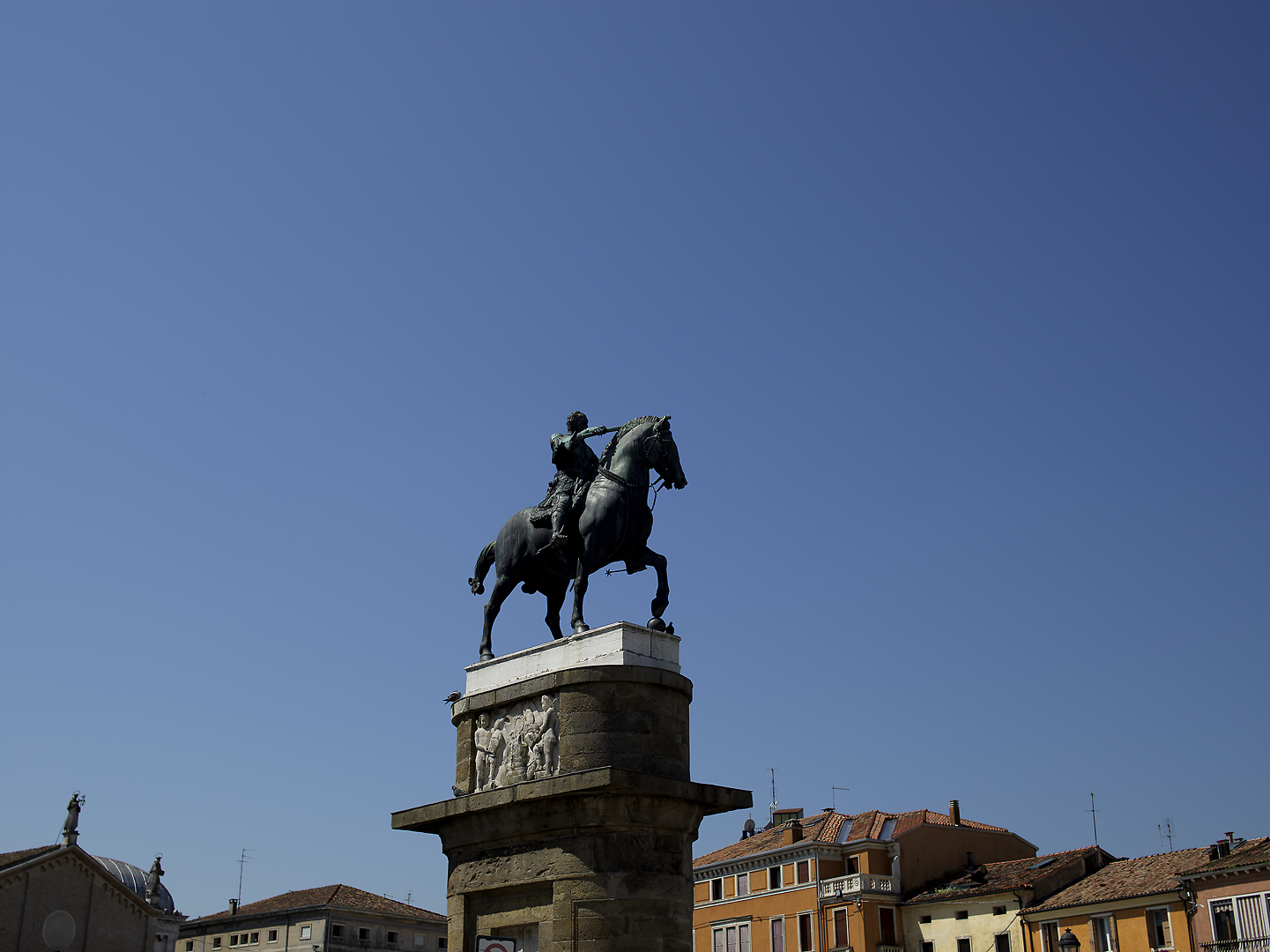
If you visit the Rocca of Narni, and are fortunate enough to have as a guide the same knowledgeable young lady that we did, she will point out where the original large stone blocks of the castle walls have been replaced with smaller, more haphazard stones. This marks rebuilding after the destruction of the Rocca, and much of the town, by the landsknechts forces of the Habsburg Emperor Charles V, part of a much greater cultural and human catastrophe – the Sack of Rome in 1527. Guarding the approach to Rome was not a good thing if the invading forces turned out to be stronger than you.
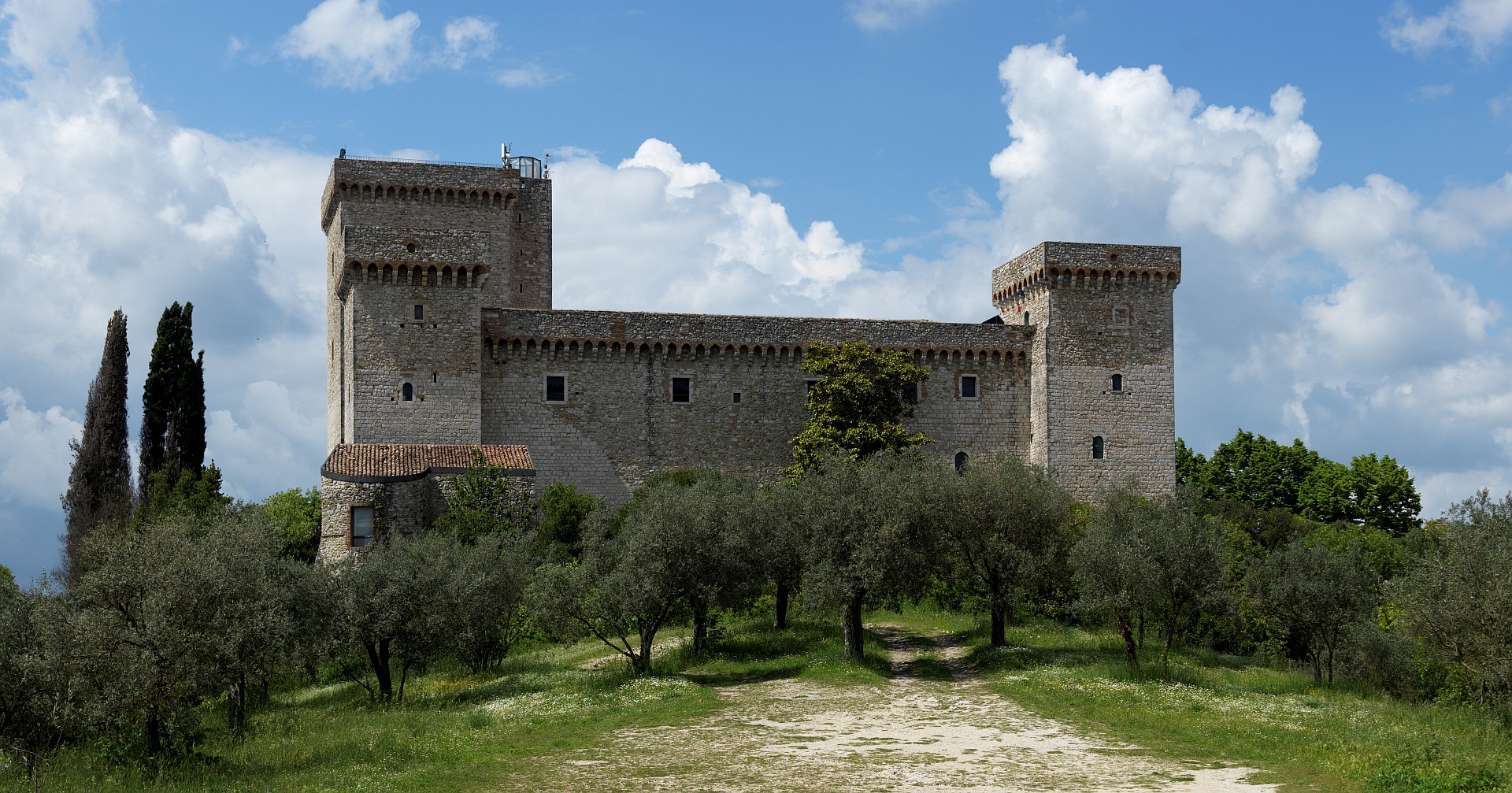
We can recommend a couple of places to visit in Narni. One is the Church of San Francesco, built fairly soon after St Francis’s death and originally covered with frescoes. While we were there a pleasant chap turned up, who turned out to be a custodian. He offered to open up the richly-decorated Eroli chapel for us which was a bonus as it is normally only open on weekends. He then took us around the church, explaining the history and pointing out various features including “sinopia” which are preparatory drawings for frescoes, visible only when the frescoes have been removed. He also explained that the poor condition of the frescoes is due in part to the fact that in the 17th or 18th century, they were all plastered over and the church redecorated in the baroque style. This vandalism only started to be undone in the 1950s, but there is still a long way to go. If you visit there, please be sure to make a donation to the fund for restoration of the frescoes.
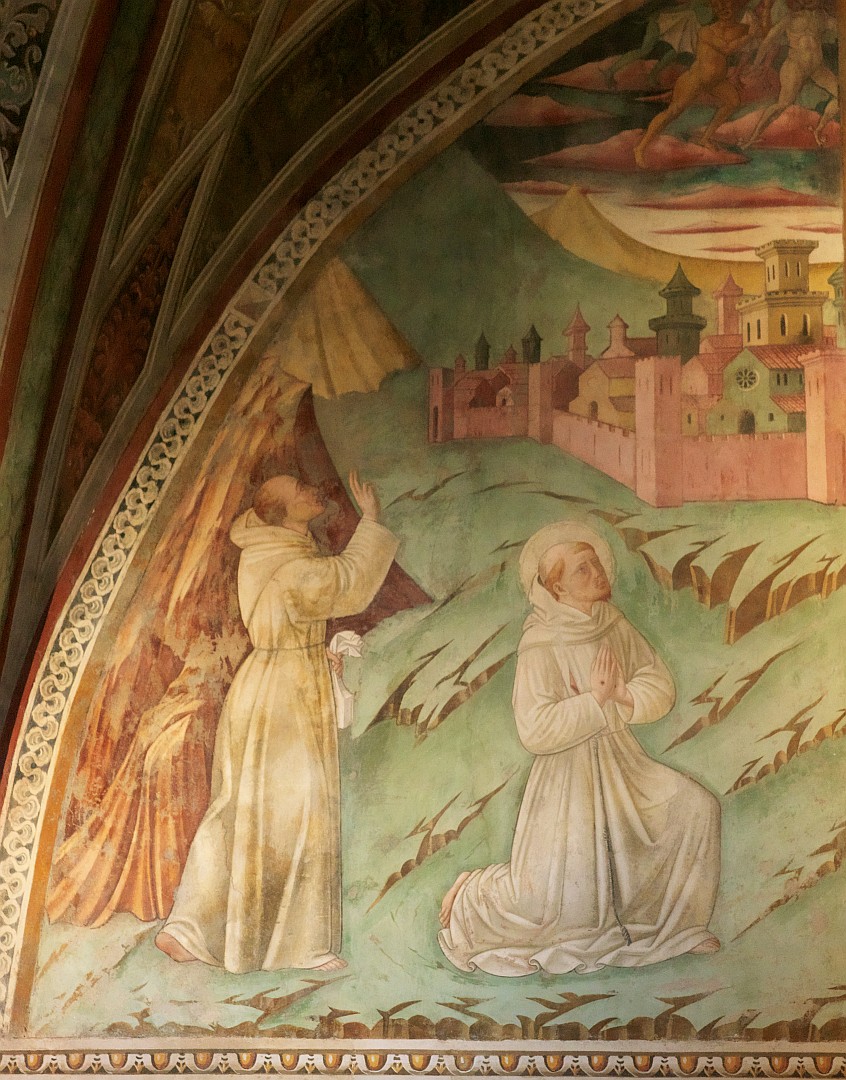
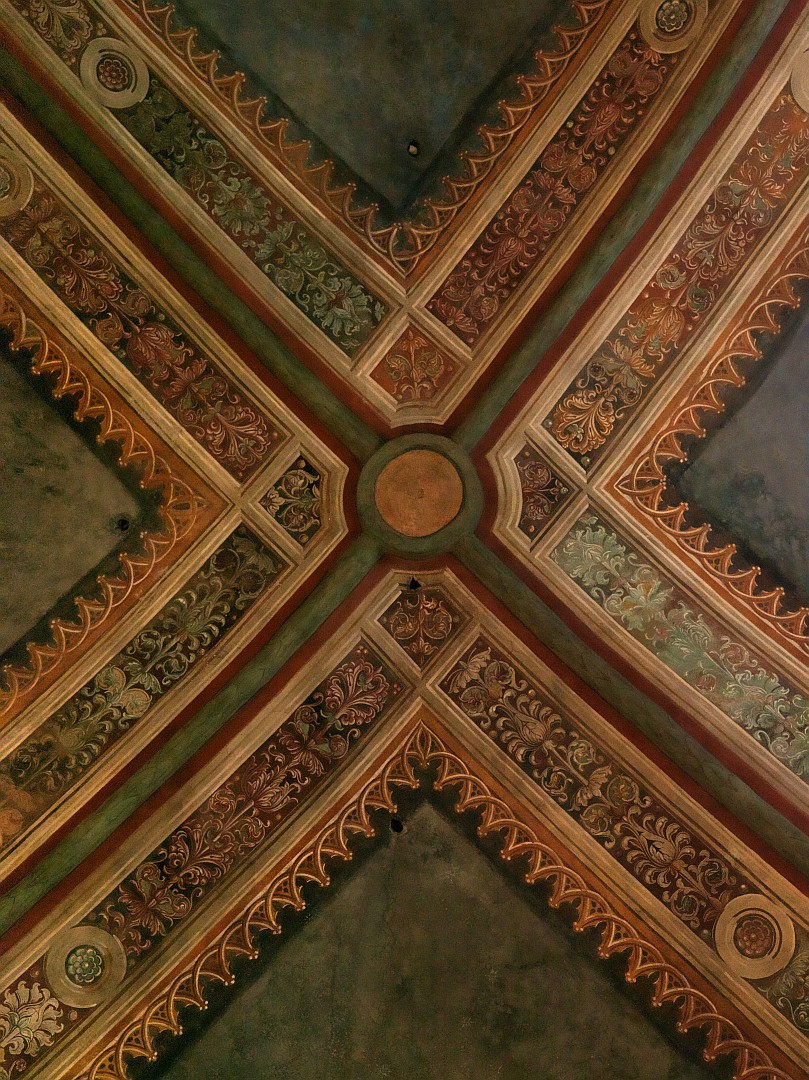
Next door to the Church of San Francesco is the other place we would recommend – the museum and gallery in the Palazzo Eroli. The collection is small and eclectic – from a pair of preserved mammoth tusks, through various bits of Roman stonework, some medieval and Renaissance art, some third-rate baroque religious art, some strange re-creations of relics from the Napoleonic conquest of Italy, through to some Second World War memorabilia. There are two highlights. One is a room where there is an Annunciation of Pinturicchio and a Crowning of the Virgin by Ghirlandaio, both from the 15th Century. The other is the view from the windows on the west side of the building, which looks straight down into the gorge of the River Nera.
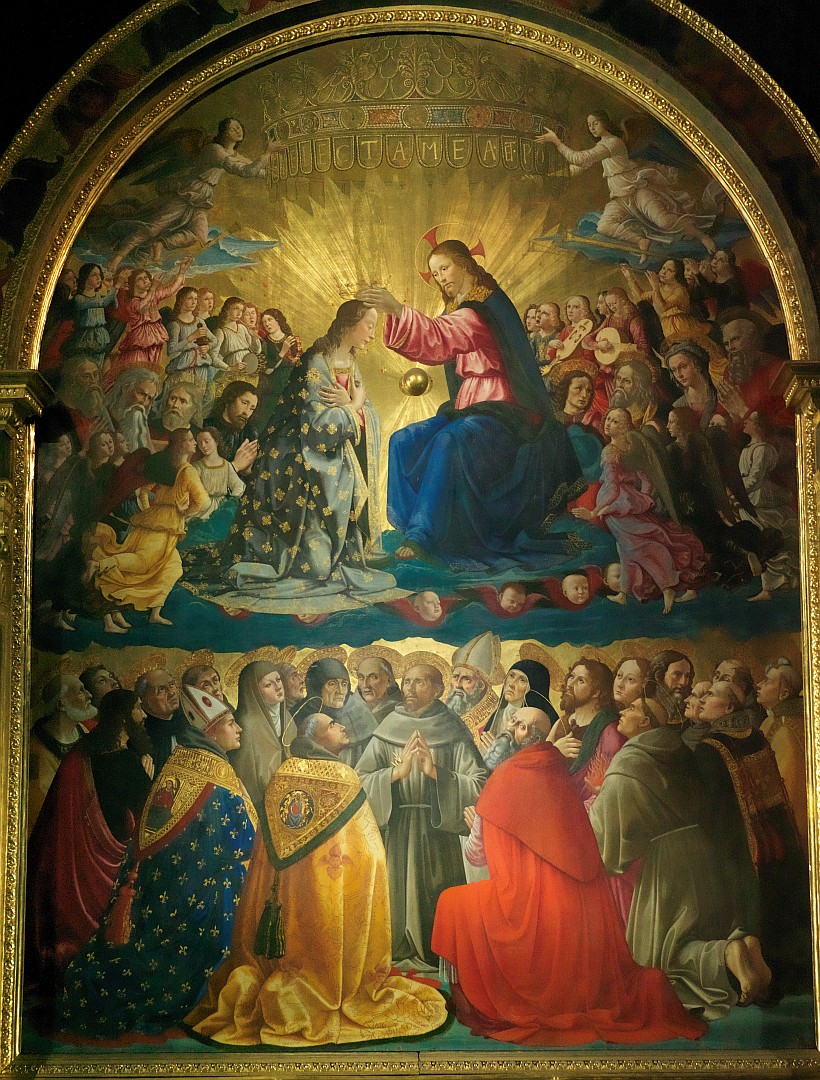
After leaving the museum we walked around the medieval town; there is an old fountain, some impressive municipal buildings and an appealing little Romanesque church called Santa Maria Impensole, built in 1175 on an older site on which once stood, according to local tradition, a temple of Bacchus. It retains some of the form and components of the older building, including a classical-style portico.
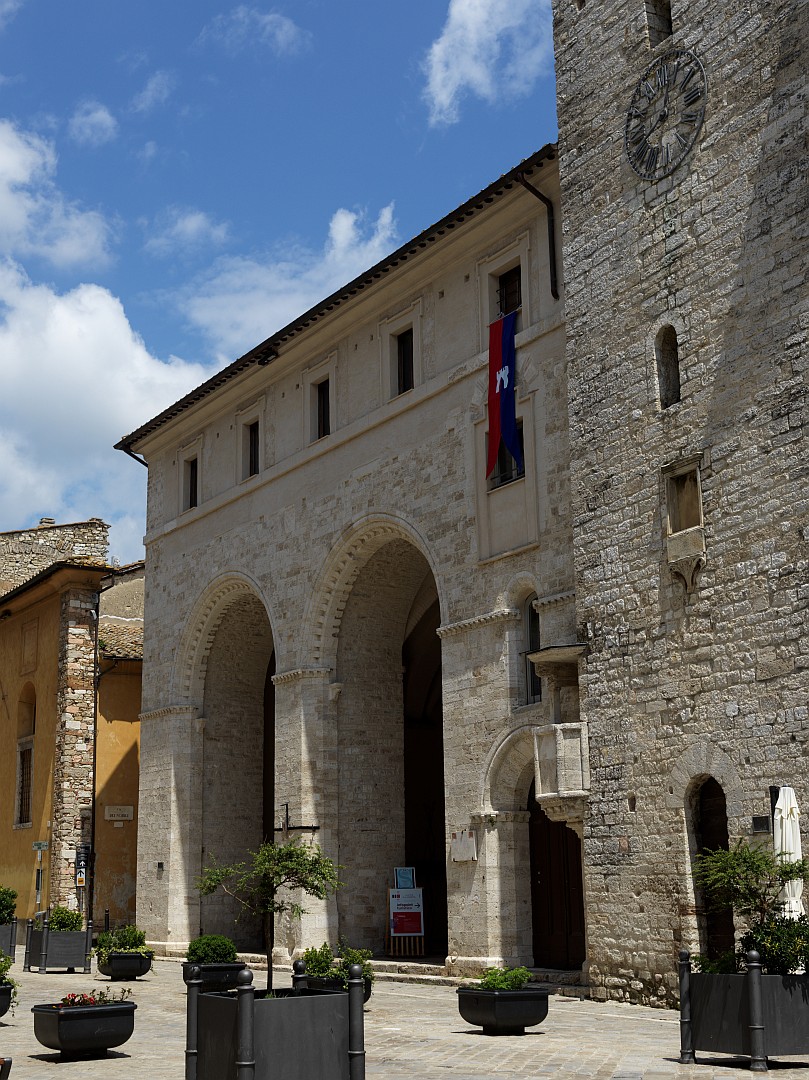
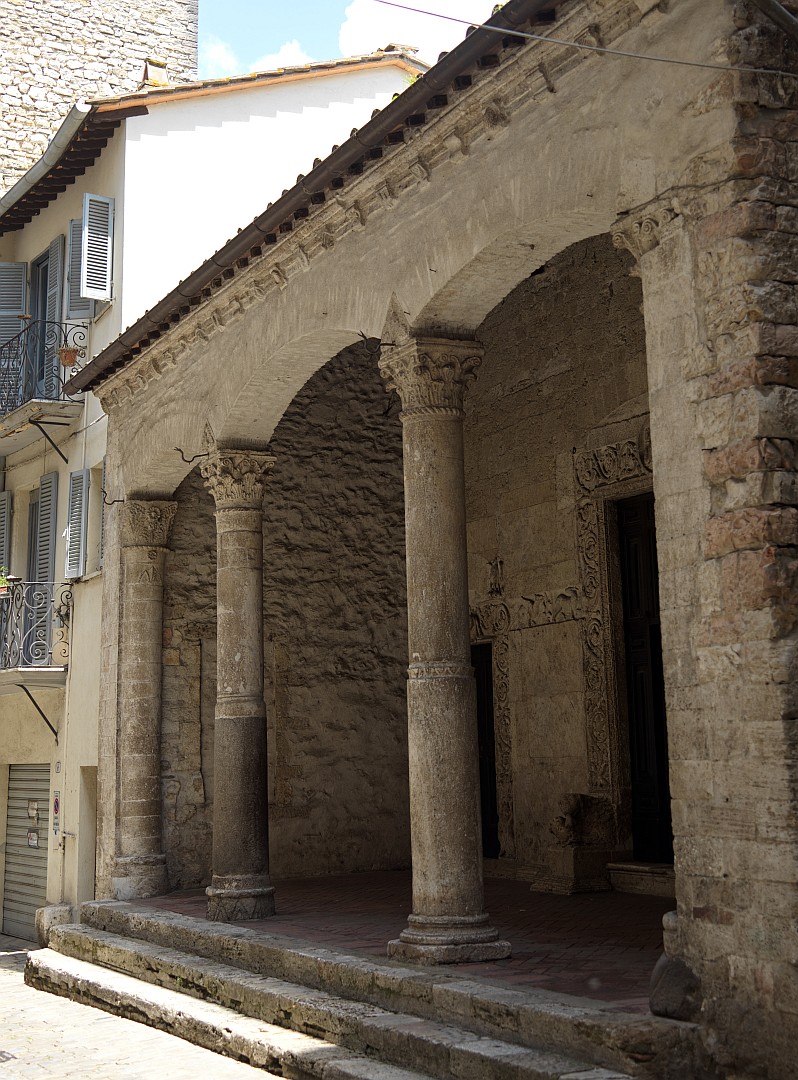
From there we walked along the northern town wall, enjoying the sunshine after a period of indifferent weather in this part of Italy, and the view of the mountains to the north and east. There we found a restaurant called “La Gallina Liberata” (the liberated hen) where we had a lunch of traditional Umbrian cooking which was excellent value.
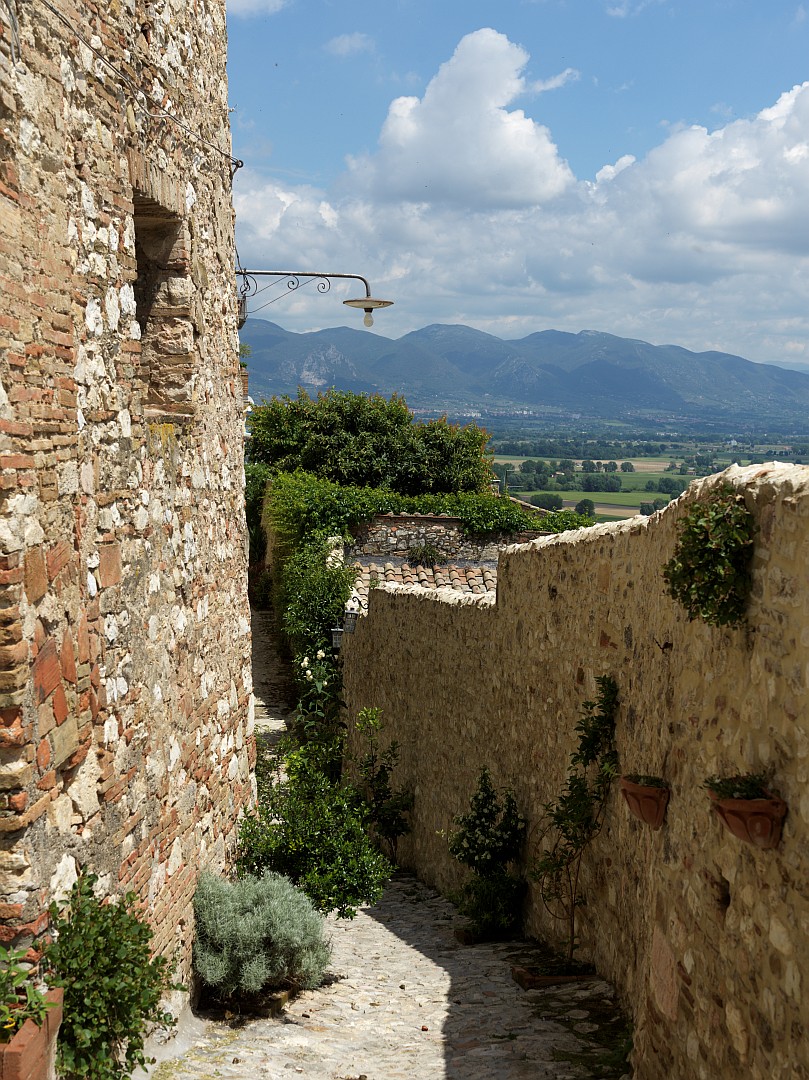
Note (1) In the words of Voltaire, “neither holy, nor Roman, nor an empire”.

4 Replies to “A Visit to Narnia”